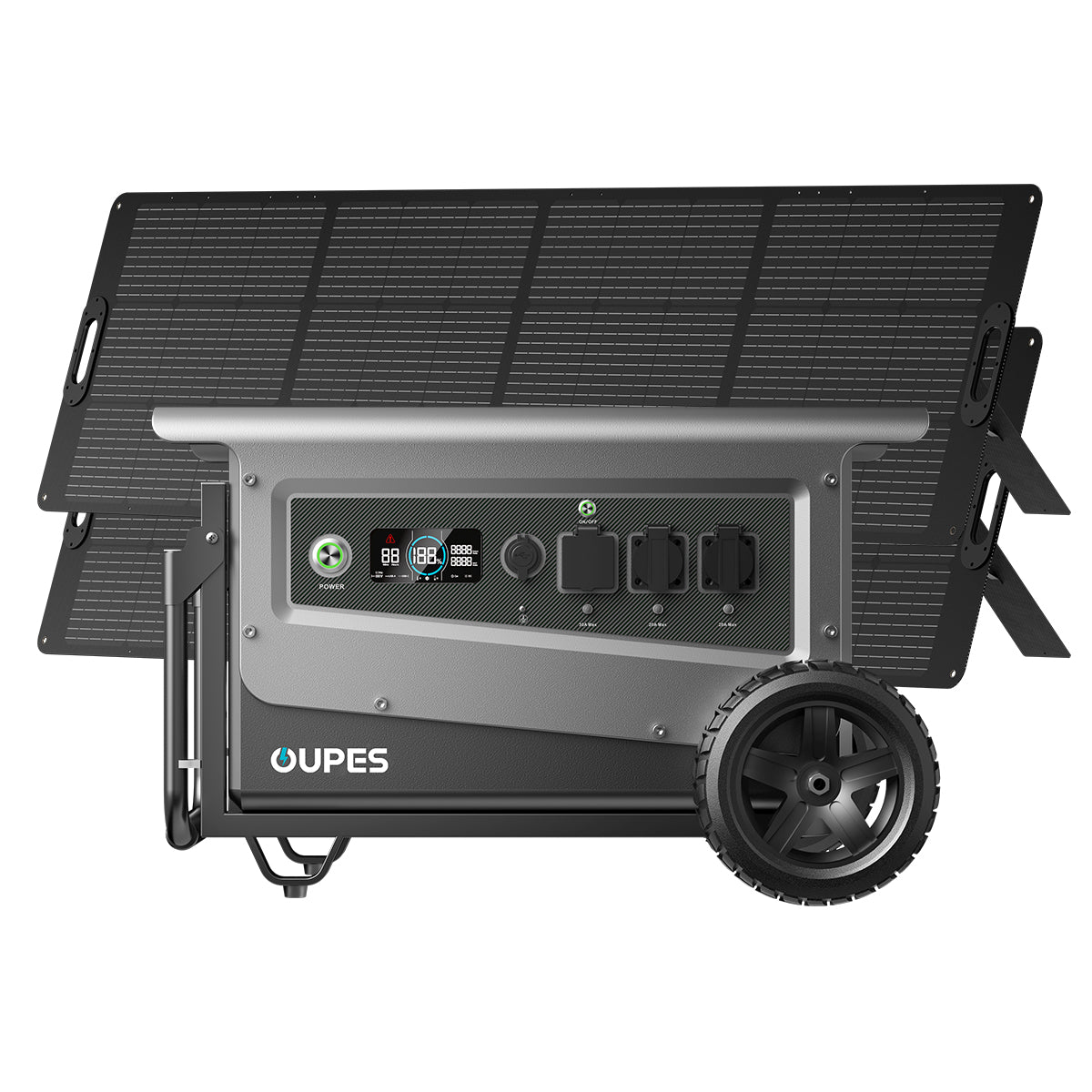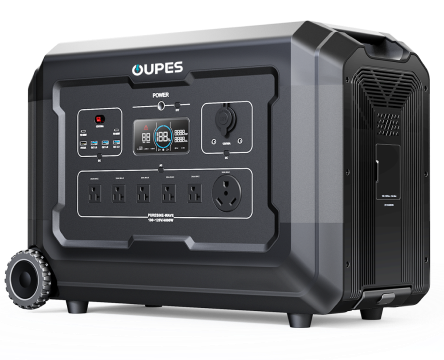
Portable power stations have revolutionized the way we power our devices in outdoor settings, during emergencies, or in off-grid locations. These compact and versatile devices provide a convenient solution for individuals who need electricity without being tethered to the grid. But just how far can you take your portable power station? What appliances can you use with these systems? In this article, we will explore the range of appliances that can be powered by a portable power station and give you the information you need to make an informed decision about your energy needs.
Understanding the Basics of Portable Power Stations
A portable power station is a battery-powered device designed to store and supply energy to electronic gadgets, tools, and other devices. These units typically include multiple output ports such as AC outlets, DC carports, and USB ports, which enable users to charge or run a wide range of appliances. The size of the power station, along with the battery capacity (usually measured in watt-hours or Wh), determines what types of appliances it can support and for how long.
The key factors to consider when determining what appliances can be used with a portable power station include the power requirements of each appliance, the wattage of the power station, and the type of output needed. For example, small devices like smartphones or laptops require significantly less power than large appliances like refrigerators or power tools. Understanding these factors helps you choose the right portable power station for your needs and ensures you can use the appliances you rely on without overloading the system.
Charging and Running Small Electronics with a Portable Power Station
One of the most common uses of a portable power station is charging small electronic devices. Whether you’re camping, traveling, or simply need backup power during a power outage, portable power stations are ideal for charging smartphones, tablets, laptops, cameras, and other small gadgets. These devices typically require a relatively low wattage, and many portable power stations come equipped with multiple USB ports for this purpose.
For instance, charging a smartphone typically consumes about 10 to 20 watts of power, which means even a relatively small portable power station with a capacity of 150Wh can charge multiple devices simultaneously. Laptops, which usually require more power (around 30 to 80 watts depending on the model), can also be powered by larger portable power stations with capacities of 500Wh or more. With the ability to plug in your devices using the built-in USB or AC outlets, you can keep your electronics powered for several days, depending on the capacity of the power station.
Another useful application for portable power stations in this category is for powering cameras and drones. Outdoor enthusiasts, photographers, and videographers often rely on portable power to keep their equipment running in remote areas where electricity isn’t available. A portable power station can provide the necessary power to recharge batteries for these devices, ensuring you don't miss out on capturing the perfect shot while away from a traditional power source.
Running Medium-Powered Appliances: Lights, Fans, and Small Kitchen Appliances
In addition to powering small electronics, portable power stations can also support medium-powered appliances. These types of appliances typically draw more power but are still manageable for most modern portable power stations with capacities in the 500Wh to 1000Wh range. Common appliances in this category include LED lights, fans, small blenders, and other kitchen appliances.
LED lights are a great example of an appliance that can be powered by a portable power station. An LED light generally consumes around 5 to 20 watts depending on its brightness and size. Even smaller portable power stations with capacities of around 300Wh can power several LED lights for many hours. This makes them ideal for use in outdoor activities like camping, where lighting is essential after dark.
Fans are another useful appliance that can be run on a portable power station. A small to medium-sized fan typically uses between 30 to 100 watts, making it a good match for portable power stations with higher capacities. These fans can be especially useful during outdoor events, camping trips, or in emergencies when air circulation is needed. The runtime will depend on the power consumption of the fan and the capacity of the power station, but many models can run a fan for several hours before needing a recharge.
Small kitchen appliances like a coffee maker or a mini fridge also fall into the medium-power category. These appliances usually require anywhere from 200 watts to 700 watts of power. A coffee maker, for example, typically uses around 600 watts, and with a portable power station that has a higher output capacity (over 500Wh), you can brew coffee on the go or in an off-grid location. However, it’s important to note that appliances with motors, like refrigerators, consume a burst of power when starting, which can be a significant load on a portable power station. Checking the surge wattage capability of your power station is essential for appliances with motors or compressors.
Powering Larger Appliances: Refrigerators, Heaters, and Power Tools
For larger appliances such as refrigerators, space heaters, and power tools, a portable power station needs to have a significantly larger capacity and a higher power output. These appliances consume considerably more energy than smaller devices and often have a high startup surge, which can demand more power than their normal operating state. As a result, the ability to power these devices depends not only on the watt-hour capacity of the power station but also on the surge wattage capacity.
Refrigerators are one of the most power-hungry appliances that many people want to use with a portable power station. A typical refrigerator consumes between 100 and 800 watts of power during normal operation, but it can require up to 1,500 watts of surge power when the compressor kicks on. Therefore, to run a refrigerator using a portable power station, you need a unit with both a high surge wattage rating and enough capacity to sustain the appliance over time. A portable power station with a capacity of 1000Wh or more and a surge wattage of at least 1500 watts should be sufficient for most refrigerators. The runtime will depend on the refrigerator's energy efficiency, but it can run for several hours, making it a good option for short-term use in power outages or during camping trips.
Space heaters are another type of appliance that requires a significant amount of power. A typical space heater consumes between 500 to 1,500 watts depending on the size and settings. These appliances generate a large amount of heat and, as a result, require more energy. While it is possible to use a portable power station to run a space heater, the runtime will be limited unless the power station has a large capacity (around 2000Wh or more) and a high output. Many users opt for a combination of portable power stations and solar panels to extend the runtime when using power-hungry devices like space heaters in cold conditions.
Power tools such as drills, saws, and sanders are another category of large appliances that can be run by portable power stations. The power requirements for these tools can vary widely, with some requiring as much as 1,000 watts or more, depending on the type and size of the tool. These devices typically have a high surge power requirement, so it’s important to ensure your portable power station can handle the spikes in power when the tool is started. Using a portable power station with a capacity of 1000Wh or greater should allow you to operate power tools for a limited time, though the runtime will depend on the wattage of the tool and the capacity of the power station.
Solar Panels and Portable Power Stations: Extending Power for Appliances
One of the key advantages of portable power stations is their ability to be paired with solar panels to create a self-sustaining energy system. While a portable power station is typically charged via a wall outlet or carport, integrating solar panels can significantly extend the runtime, especially in off-grid or emergency situations. Solar panels are a great solution for users who need to power appliances over long periods without access to the grid.
Solar charging works by converting sunlight into electricity and feeding it into the portable power station's battery. The amount of power generated depends on the size and efficiency of the solar panels, as well as the intensity of the sunlight. For example, a solar panel with an output of 100 watts can provide a steady charge to a portable power station, but it may take several hours to fully charge the unit. Larger solar panels with higher wattages, such as 200W or 300W systems, can charge the power station more quickly and provide more energy for appliances.
When paired with solar panels, portable power stations can run a wide range of appliances for an extended period of time. Solar charging is particularly useful for remote locations, camping trips, or during emergencies when traditional charging methods are unavailable. Some users even opt to keep solar panels connected to their portable power station in order to continuously charge the device throughout the day, ensuring they have a steady supply of power for lights, fans, or other small appliances.
Conclusion: Choosing the Right Portable Power Station for Your Needs
Portable power stations are an excellent way to power a variety of appliances, from small electronics to medium-powered kitchen gadgets and larger items like refrigerators or power tools. The key to selecting the right portable power station lies in understanding the power needs of the appliances you wish to use and ensuring that the device you choose has the right battery capacity and output to support those needs.
Whether you're using a portable power station for a weekend camping trip, as an emergency backup during power outages, or in an off-grid setting, there are numerous appliances you can power with these devices. By




























